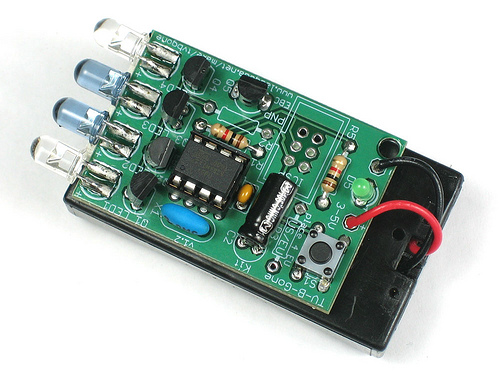
Full Spectrum Engineering has offered up a tutorial for their inkjet direct PCB kits that repurpose direct-to-CD capable inkjet printers (such as the Epson R280) to print etch-resistant ink straight onto copper clad board. This is easier and less error prone than some iron-on methods, especially for two-sided boards. Just print (no need to reverse the design), dry on a hot plate or in a toaster oven for a couple minutes, and your board’s ready for etching!
Concerned about gunking up your nice inkjet with non-OEM ink? You can dedicate hardware to the job without breaking the bank. Many of the compatible printers are of the “free printer after rebate” bundle variety that can now be found inexpensively on Craigslist or eBay.
















